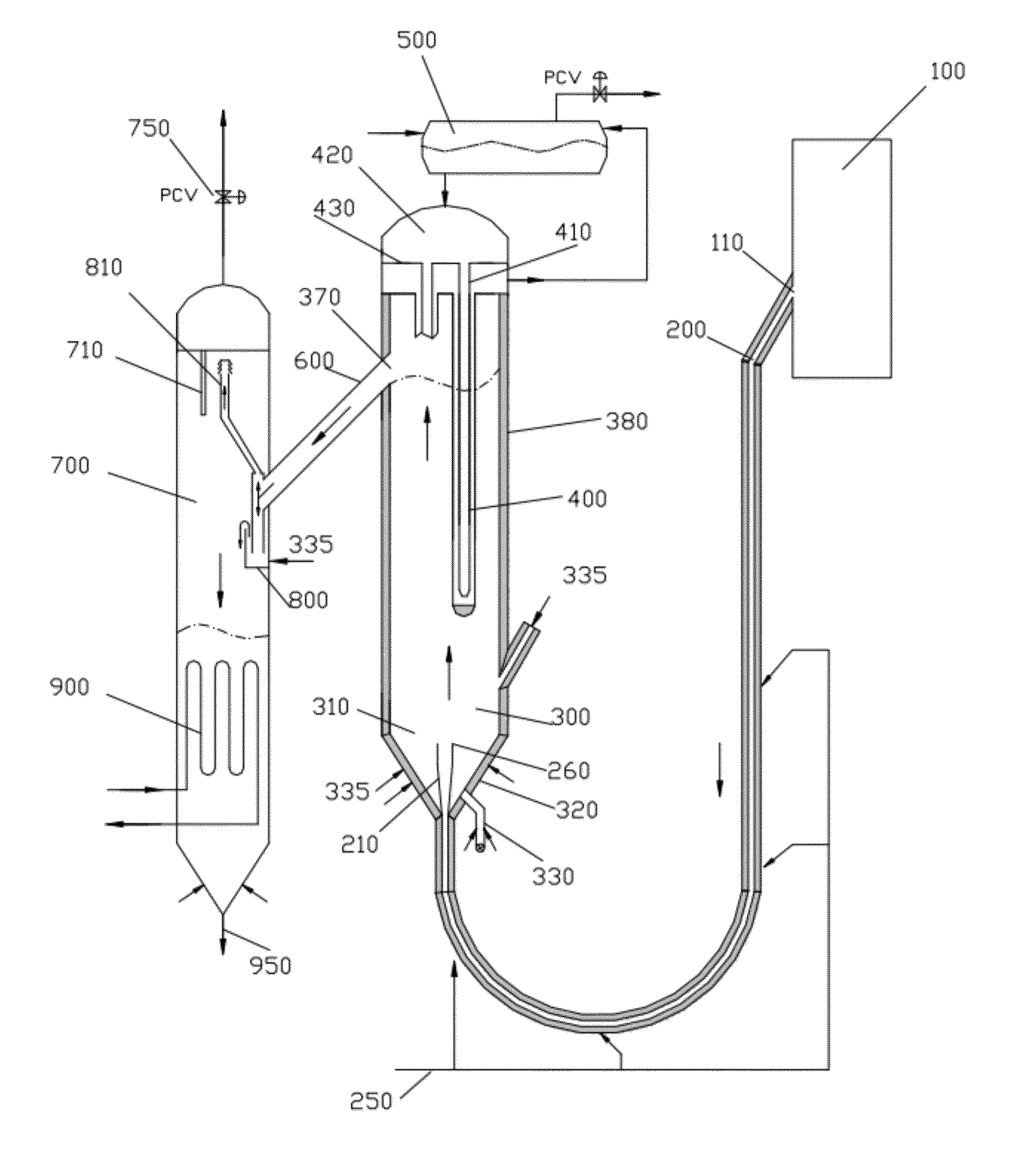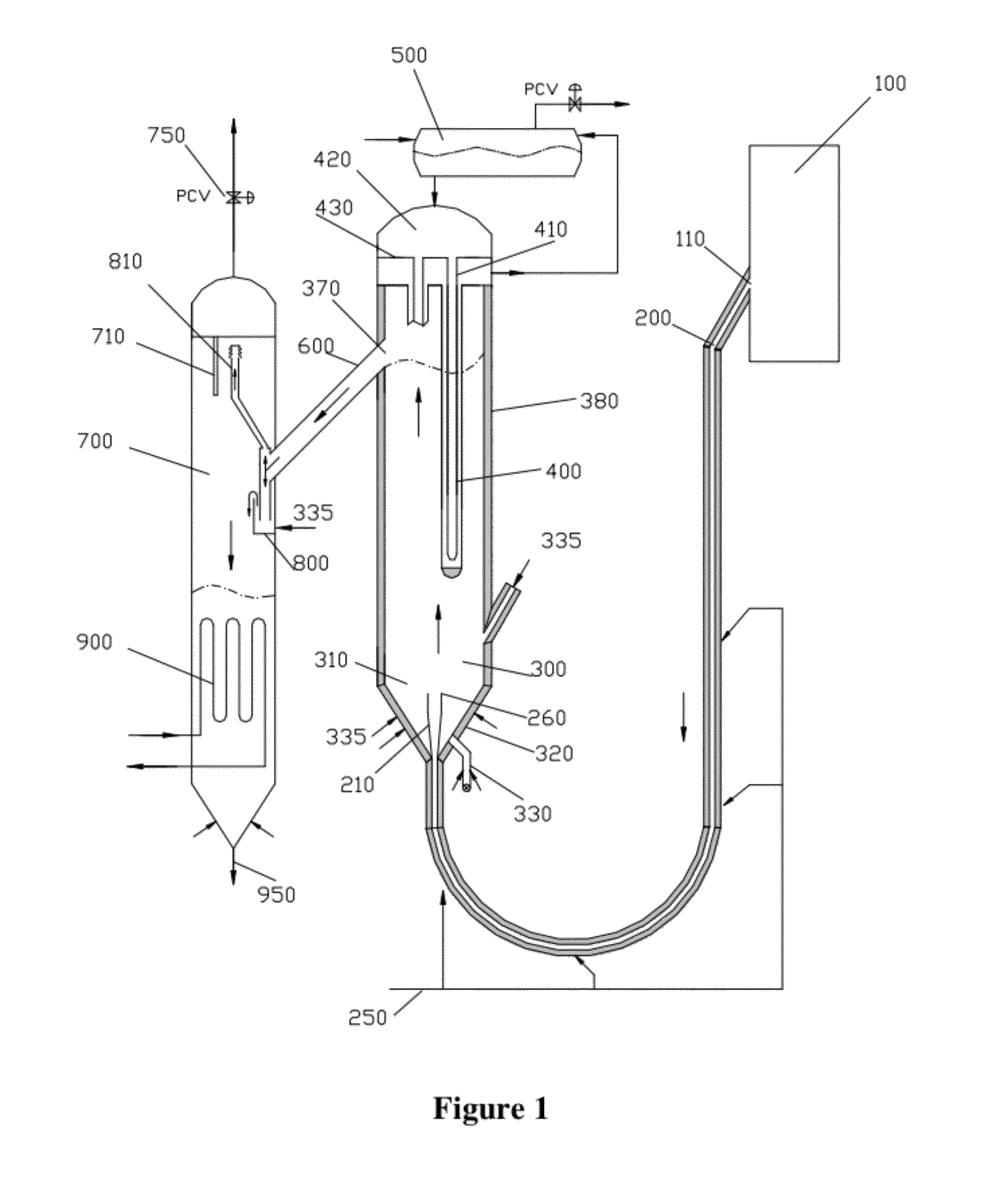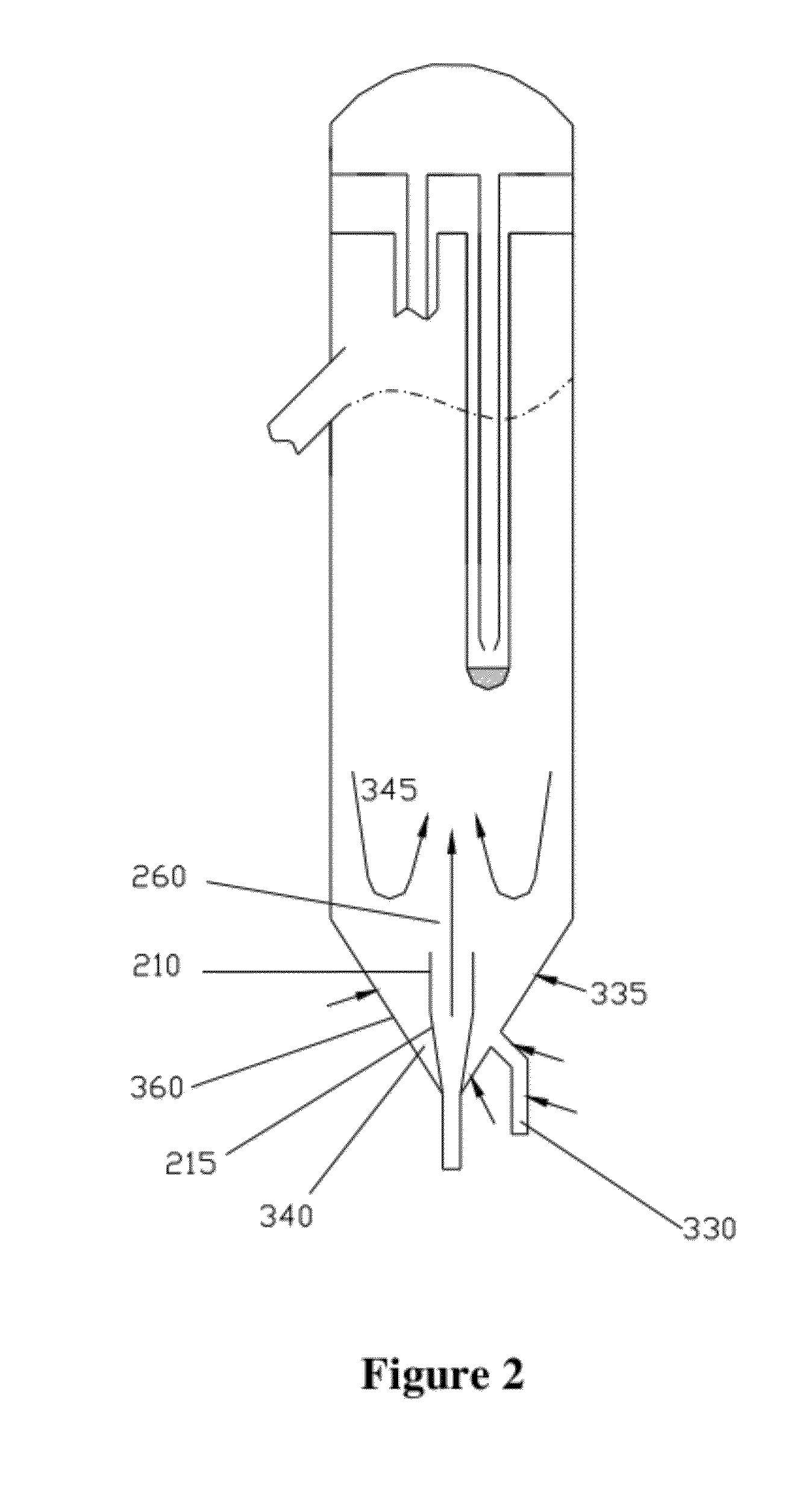A first challenge is supporting the
heat exchanger tubes that will exchange the heat from the solids to a cooling media.
The difficulty in this issue is that the support has to be anchored to the outside wall, penetrating through
layers of refractories that are necessary to
resist the
erosion due to movement of
solid particles (in the
mass mean diameter size range of from approximately 50 microns to 400 microns), and to insulate the wall from overheating.
The vibration of the support can damage the
refractory, and cause the vessel wall to locally overheat.
Heat conduction through the support can also overheat the vessel walls, damaging and deforming the vessel.
This is a serious concern as the vessel forms the pressure boundary.
A second challenge in the development of a
high pressure, high temperature
heat exchanger is to achieve appropriate control of the solids flow to the
heat exchanger without interfering with the operation of the gasifier or reactor from which the solids are being withdrawn and / or to which the cooled solids are being returned.
Also, for the circulating
fluidized bed gasifier, when the solids are withdrawn from the standpipe, the
aeration gas cannot be returned to the standpipe or the gasifier due to pressure restrictions.
Handling of the vent gas is difficult as the gas entrains fines at high process temperatures.
Under these circumstances, a challenge becomes how to vent the
aeration gas and a portion of the gas entrained by the solids.
A fourth challenge in cooler equipment design involves appropriate handling of foreign and extraneous materials that originate from or pass through the gasifier.
Foreign and extraneous materials in the process result from, for example, contaminated feed, chipped
refractory, broken gasifier internals and clinkers and
slag formed during the process due to variability in feed fuel (coal, for example) or improper operation.
These materials are generally oversized and need to be removed from the process before reaching the heat exchanger surfaces to limit or prevent blockages in the flow path of hot solids.
As one of skill in the art appreciates, however, with gasifier operation, it is highly desirable to
discharge extraneous materials from the gasifier, as accumulation of extraneous materials in the gasifier can cause various operating issues including formation of clinkers in the gasifier.
It is difficult to return such a large amount of gas flow through the cooler to the gasifier or
combustor without interfering with its normal operation.
Another issue with the FCC references is that if the extraneous materials, which are common in gasification and
combustion processes, pass through the cooling bundle, they can segregate and accumulate in the bottom of the cooler, eventually interfering with the normal operation of the cooler, since the FCC design has the solids downward flow and side withdrawal near the bottom.
As one of skill in the art appreciates, however, with gasifier operation, the
operating temperature can reach as high as approximately 2000° F.; thus, the materials selection can be a challenge or the materials cost will be prohibitive when the hot solids at such high temperatures directly contact the
heat transfer surface.
However, in Kokko's design, solids have to make turns in three chambers that naturally makes the flow of solids more complex and more difficult to
handle extraneous materials.
However, the
large particle ash chamber does not have a cooling surface, and therefore the ash withdrawn from the chamber is essentially the same temperature as that in the
combustor.
It is also difficult to achieve good separation of coarser and finer particles in a fluidized
bed.
In Maryamchik et al., the
fluidization gas returns back to the
combustor, a practice which may not be feasible for some applications.
As one of skill in the art appreciates, however, with gasifier operation at
high pressure, the cooling surface penetrating the wall can become a serious safety issue, and no known solution exists, other than to avoid it altogether.
Further, the cooling surface in the heat exchanger will still be in contact with finer particles essentially at the same high temperature of approximately 1600° F. as that in the combustor, necessitating the use of expensive
engineering alloy materials for
heat transfer surfaces.
This combination of large purge gas flows and handling the high temperature particles increases the material, fabrication and operation costs.
In Liu, all the purge and
fluidization gas flows back to the gasifier, impeding operations if the flow is excessive.
Further, the cooling surface of Liu penetrates the
refractory and vessel walls of the cooler causing potential difficulties with cooler wall design even with gasifier operating pressures being less than approximately 50 psi.
During operation, the cooling surface contacts solid particles that are near the high gasifier operating temperatures, which leads to challenging and expensive design.
 Login to View More
Login to View More  Login to View More
Login to View More 


